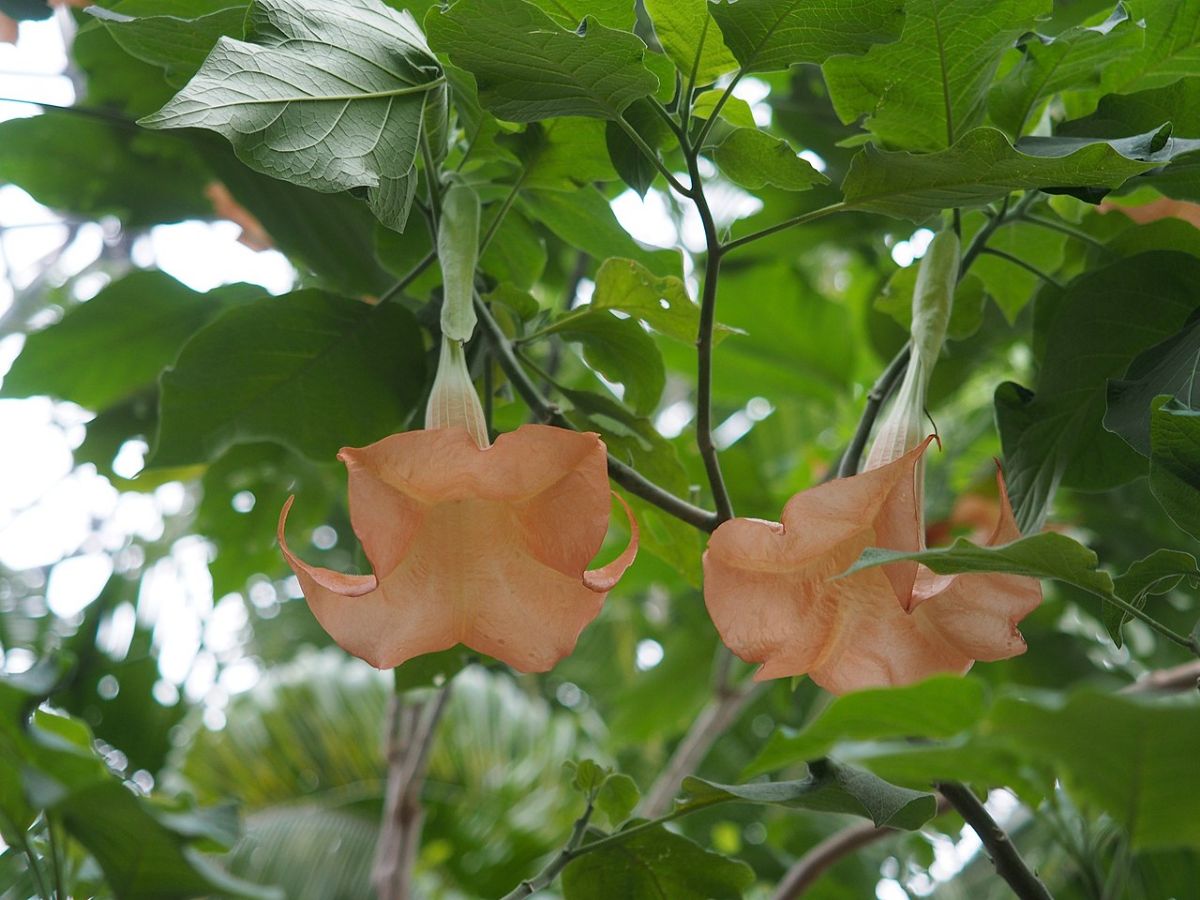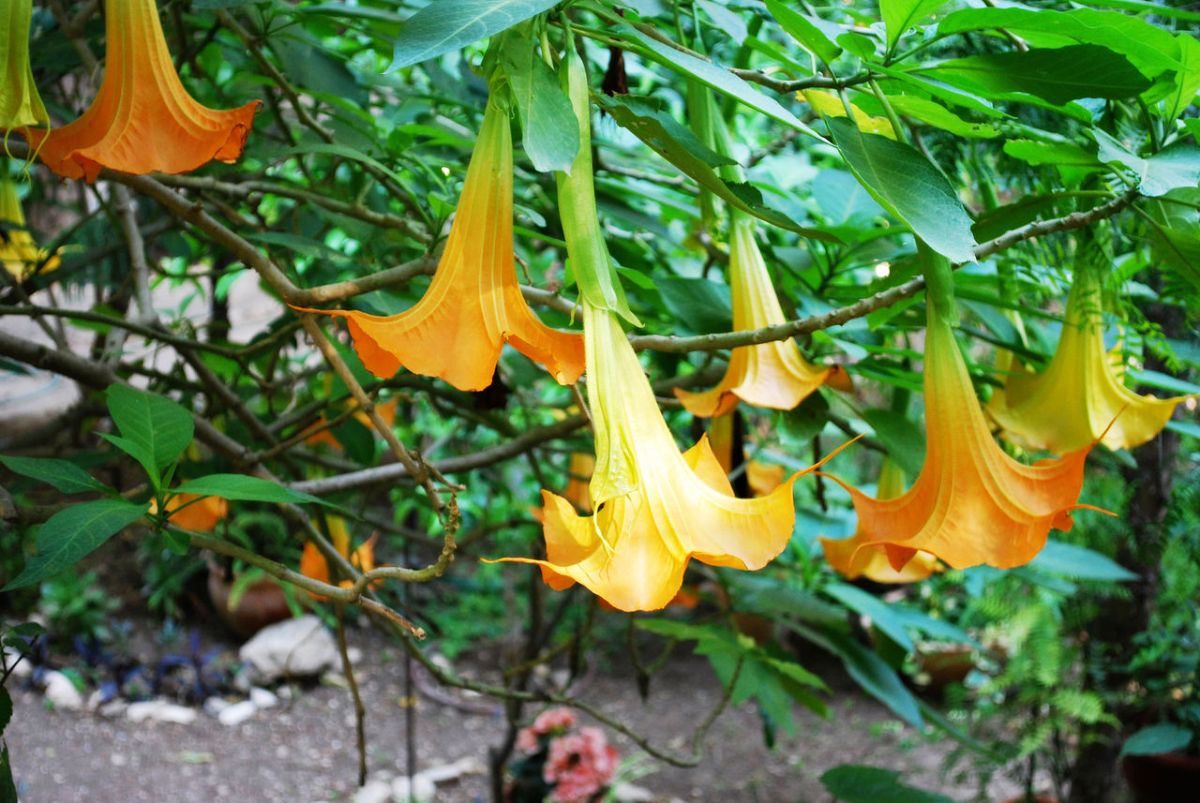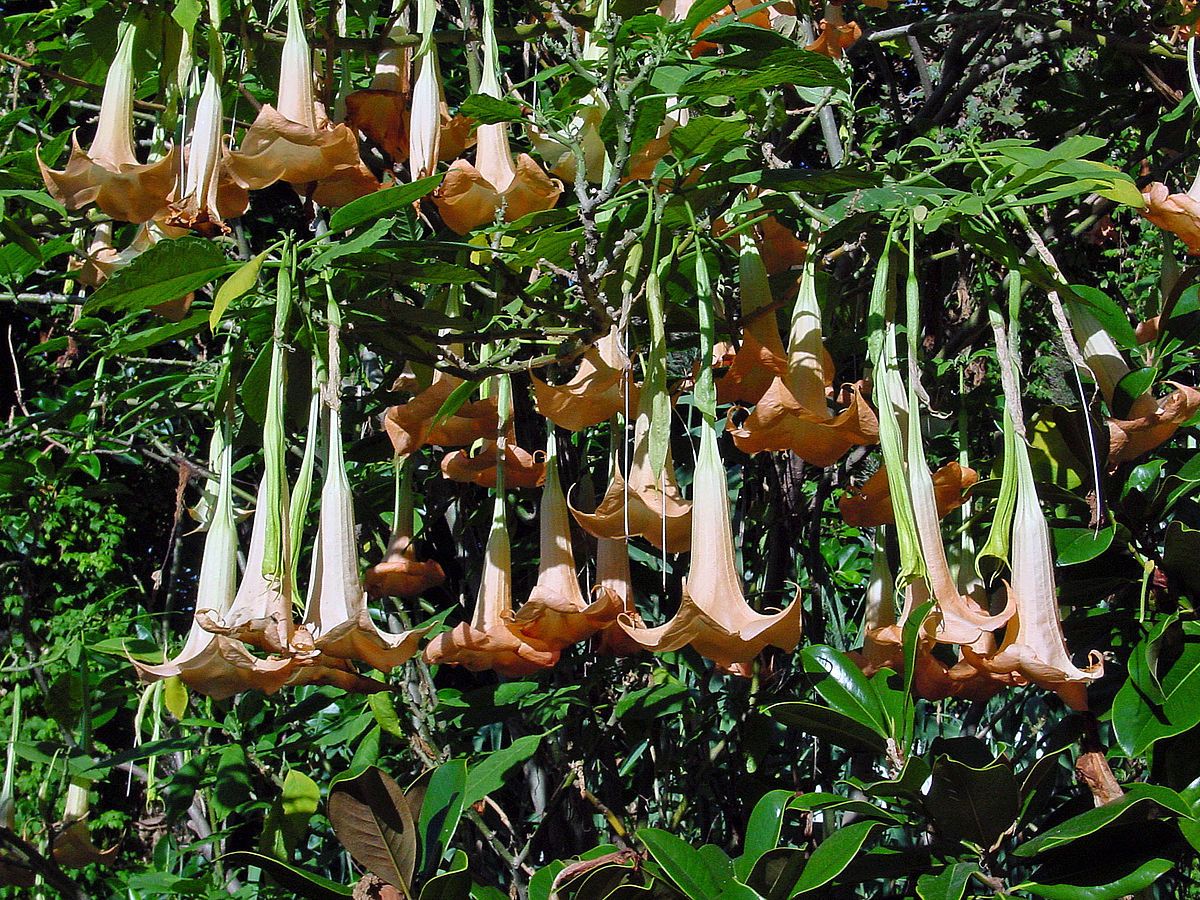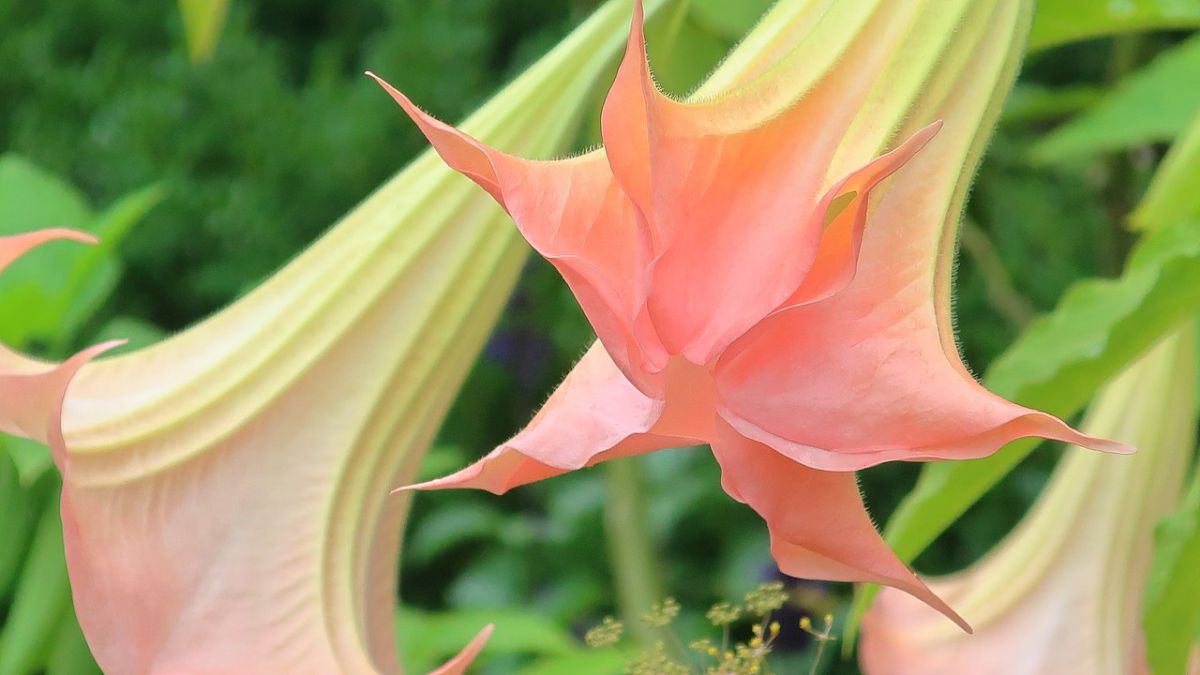
Have you ever heard of the Brugmansia versicolor? It is a plant native to Ecuador, also known as Angel's Tear, Angel's Trumpeter or Datura versicolor.
If you have this shrub at home, or are considering planting it in your garden, you should know what are the characteristics and care it needs for it to develop properly. Can we help you with that?
Features Brugmansia versicolor

The first thing you should know about the Brugmansia versicolor is that his name is made up of two words, one in honor of Sebald Justin Brugmans, professor of Natural History; and the other which means "very differently colored." And it is that one of the characteristics of this shrub is, without a doubt, the tones that its flowers can acquire.
Can reach reach four or five meters, the minimum height being two meters. In addition, it has leaves with an elongated and oblong-elliptical shape. Although the silhouette of the leaves has a toothed shape, the truth is that it is considered soft-edged.
As for the flowers, these are spectacular. They are quite large and also, instead of going upwards, they hang with the chalice facing downwards. These can be between 30cm and 50cm. The corolla of the Brugmansia versicolor It is almost always white, but in reality there are specimens that can give them in another hue such as peach, pink ... Even as the plant grows older it is capable of changing the color. These are like tubes, which become narrower and leave just enough space for the teeth of the corolla.
You must also know that the plant bears fruit. They are usually between 20-30 centimeters.
Caring for the Brugmansia versicolor

Now that you have a better idea of the plant, it is time for you to know what care you should provide so that it does not die but grows to its maximum. You should be aware of the following:
Temperature
As we have told you before, the Brugmansia versicolor It is a plant that comes from Ecuador, so it is considered exotic and, therefore, it will not tolerate low temperatures. Now, it is known that it is very resistant, and that it adapts well to gardens as long as the winters are mild.
It can tolerate temperatures below zero degrees, but not too intense (we are talking about at least two degrees or so).
Lighting design
In this he is not too demanding. The plant adapts perfectly to semi-shady places as well as direct light. What he would not tolerate is that it was always in the shade, since it would not suit him at all.
In the case of direct light, there would be a problem if summers are very hot in your area because, if there are also strong (and warm) winds, it could suffer a lot, to the point of irretrievably deteriorating.
Earth
Because it is native to South America, specifically the tropical zone, the plant will prefer wet soils before the dry ones. For this reason, we recommend that you choose a type of soil that withstands water well (without causing flooding, of course) and can be very nutritious soil.
Irrigation
From the above that we have said, you will realize that it needs moderate watering. The important thing is that the plant remains humid, hence the waterings are more abundant than with other plants.
In general, watering the Brugmansia versicolor must be, in summer, at least 1-3 times a week. This will depend on the type of climate you have because if it is too hot it will need more water than if it is milder.
In autumn you have to start to space the waterings while, in winter, it will be enough to water it once every two weeks. Everything will depend on the type of winter you have, since if it is mild, it may ask you for one watering a week.
Fertilizer
The plant appreciates it, especially in the spring and summer time when it is in full development. You can add it every 20 days and we recommend that a mineral fertilizer is better.
Diseases and pests
Indoors, it is very likely that be attacked by the Red spider or by the white fly. Two quite serious pests for the plant that can affect its growth. To eliminate them, you can use acaricides (for the spider mite) and potassium soap or insecticide (in the case of the fly).
Pruning
La Brugmansia versicolor it is one of the plants that best supports pruning. In fact, if you are someone who likes to do a drastic, the plant has the ability to regenerate easily.
However, in this case you would only have to cut it to prevent it from falling apart or to clean it from branches that may be weak, that are not useful, etc.
Multiplication
This plant is hermaphroditic, which makes their reproduction occurs throughout the year. Although it is said that the plant only reproduces through the production of seeds, the truth is that also, in pruning, those stems or cuttings can be used for multiplication (especially since they are faster than planting the seeds).
Of course, if you do it with this method, it is important that they are the ones that are cut between spring and late summer because they are the ones with the most possibilities.
Curiosities

Something you should know about the Brugmansia versicolor is that it is poisonous. Yes, because it contains alkaloids, such as atropine, hyoscyamine or scopolamine, the plant is toxic and poisonous.
If ingested it will cause problems not only in the body, but also in the mind. We are talking, for example, of having hallucinations, that your pulse or blood pressure increases, you will get fever and muscle weakness ... In more serious cases it can lead to paralysis.
In this case all this will happen if the leaves, seeds or flowers are eaten.
Another curiosity of the Brugmansia versicolor is that its flowers give off a very unpleasant smell. They do it because it is the way to attract bats since they are in charge of feeding on plants and, at the same time, making their seeds propagate. So be careful if you are looking to create a garden with attractive smells; because it may be that this does not have them.
Now that you know a little more about Brugmansia versicolorWould you dare to have it in your garden? You already have it?